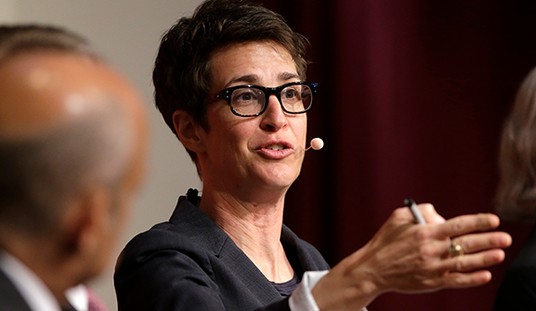Whenever the corporate state media, in their ceaseless refrain, exhorts the peasants to Respect the Science™, the immediate and obvious follow-up question should always be: whose science?
The reason any respectable institution forces scientists in its employ to disclose their conflicts of interest on every study they publish is precisely because scientists — who, no matter how much we are told occupy some sort of demigod status, are just people — are as susceptible to corruption as anyone else.
Related: MASSIVE Academic, Scientific Fraud Exposed
The problems with the disclosure mandate are that a.) scientists often don’t disclose their conflicts of interest because they know they would undermine their credibility, and b.) they might not even be aware of what the ultimate source of their funding or sinecure is or what shady backroom deals their bosses make (see: Fauci’s NIAID funding empire).
I have covered at PJ Media before that the sugar industry bankrolled the cholesterol-causes-heart-disease narrative dating back to the 1960s.
Now, a recently released report chronicles in great detail how that very same industry promulgated the narrative that fluoridating the public water supply represents the best method for preventing dental problems downstream of mass consumption.
Related: Chelsea Clinton Launches Anti-MAHA Podcast
This particular endeavor dates back to the early 20th century, when the industry developed a front group called the Mellon Institute of Industrial Research to come up with an industry-friendly solution to dental caries.
The entire research agenda to that end was riddled with errors and improprieties that, on their face, rendered whatever ultimate findings unsound.
Via Environmental Health (emphasis added):
In 1930… the [sugar] industry started funding what was called The Sugar Fellowship at the Mellon Institute of Industrial Research [98]. The Mellon Institute was a private organization that industry could contract to do research. The Sugar Fellowship was intended to produce evidence that would exonerate sugar from causing tooth decay (dental caries) or failing that, find ways to reduce caries without restricting sugar consumption. Chemist Gerald Cox (Fig. 5) led the project and sought to find a substance against dental caries in what he likened to the alchemist’s quest for the magical “philosopher’s stone” that could turn base metal into gold…
Cox’s experiments were in rats given dozens of different types of diets, either to the mothers or their offspring. His first experiments found that rats do not naturally develop any caries, no matter how much sugar is in their diet. Thus, Cox had to “induce caries” in them by giving them a hard cracked-corn diet that caused fractures in their tooth enamel that could then develop into caries…
To shift attention from this confirmation that sugar accelerates induced caries, he focused on the diet of the mother instead of her pups. A maternal high-sugar diet would not greatly affect the offspring’s caries susceptibility [105]. During the first five years of his experiments, he found many maternal diet items that were effective against induced caries in the offspring. They included “Increased haliver oil [halibut liver oil], increased Ca [calcium] and P [phosphorus], high fat diet, or meat diet” as well as butter, milk, and whey concentrate (Borden’s “XXX liquor”) [106, 107]. Some of these diet items, when fed to pregnant rats, produced substantial reductions in induced caries in the offspring. For example, supplementation with haliver oil, a rich source of Vitamin D, together with calcium and phosphorus, was able to reduce caries by 45% [108]. A maternal diet high in corn oil reduced caries by 32%, and a maternal meat diet “in imitation of the diet of the Eskimo”, reduced offspring caries by 58% [109]. It is unclear why Cox was not satisfied with these findings of substantial caries reductions, but kept testing hundreds of other diets, sacrificing thousands of animals, in search of an elusive “dentamin”.
There are conflicting accounts of how Cox came to consider trying fluoride [46] (pp. 39–44). Ironically, he first thought fluoride would increase caries, so he tried to minimize fluoride levels or bind it with aluminum, expecting such diets to reduce caries [110]. By 1937 he was finding the opposite, that adding fluoride to the maternal diet was reducing cracked-corn caries in the offspring. By 1939 he was convinced he had found his “dentamin”. But when he published his results on fluoride (omitting mention of the other caries-preventive diets) he reported fluoride reduced decay by only about 20% on average, less than several of the other diets he had studied [105]. Even this modest benefit is brought into question by numerous problems with Cox’s study designs…
Whether or not Cox’s experiments justified it, by September 1939 he would be the first person to publicly propose artificial water fluoridation. His paper did not disclose his connection with the sugar industry [105]. This was six years before the first human fluoridation trials in 1945. Cox went on to vigorously promote fluoridation for the rest of his life [112].
Shortly before he had announced his proposal for water fluoridation, he had drawn up an application to patent fluoridation of water and foods, although it apparently was never filed [113]. After completing his work on diet and caries at the Mellon Institute in 1941 he spent two years writing major portions of a report on caries and its prevention for the National Research Council (NRC) [114, 115]. He emphasized fluoride. After the NRC Cox moved to a job at the Corn Products Refining Co., whose products included dextrose (corn sugar) and sweet malt syrups [116,117,118]. After his stint at Corn Products Refining Co., he was appointed to a position at the University of Pittsburgh Dental School [116].
Cox’s experiments eventually gave the sugar industry much of what it wanted. Although he concluded sugar did accelerate caries in what he considered poorly developed teeth, he claimed that fluoride in the mother’s diet could produce offspring teeth that were resistant to decay, even when the offspring had a high-sugar diet [119]. Cox gave the sugar industry their “magic bullet” against tooth decay.
Decades later, the National Institutes of Health/National Institute of Dental Research (NIH/NIDR) sponsored the first rigorous human study to see whether prenatal fluoride supplementation of the pregnant mother could reduce caries in their offspring [120]. The study was a double-blind randomized controlled trial (RCT). It found no significant benefit. Recently, the US Centers for Disease Control Oral Health Division (CDC/OH), in court testimony, confirmed that they do not consider prenatal fluoride to significantly reduce caries in the offspring.
Related: Report: The Science™ Hid Data That Fluoride Lowers IQ
From its inception, the Mellon Institute of Industrial Research was transparently dedicated to promoting industry interests. After all, what other reason would for-profit corporations, which have a fiduciary responsibility to invest resources in the furtherance of generating revenue, have for funding scientific research?
Via Carnegie Mellon University (emphasis added):
The Mellon Institute of Industrial Research was a non-profit independent research firm, dedicated to solving the immediate research needs of industry and training new scientific researchers for the benefit of society as a whole. The institute was established in 1913 with financial support from Pittsburgh financiers Andrew W. Mellon (1855-1937) and Richard B. Mellon (1958-1933). Originally founded as the Mellon Institute of Industrial Research and School of Specific Industries at the University of Pittsburgh, it was the first major research firm of its kind in the United States. In 1927, the institute separated from the University of Pittsburgh and incorporated as an independent, non-profit organization that was managed by a board of trustees. It also changed its name to Mellon Institute of Industrial Research.
The ‘industrial fellowship system’ – the framework behind the institute – was conceived by Robert Kennedy Duncan (1968-1914), a chemist and professor. The fellowship system promoted strong partnerships between industry and scientific research; it also educated new scientists and exposed them to the real world of industrial research…
Fellowships were sponsored by a wide variety of companies and individuals such as the Armstrong Cork Company, American Iron and Steel Institute, Gulf Oil, H.H. Robertson Company, Union Carbide, and the St. Joseph Lead Company.
Of course, there is nothing inherently wrong with industries researching industrial applications for new technology. But, to my mind, this kind of work falls much more in the camp of “commercial enterprise” rather than unbiased academic research in the service of scientific discovery.
Should public health agencies be using its findings to justify public health policy?
No rational person who understands how interests operate could possibly believe that.










